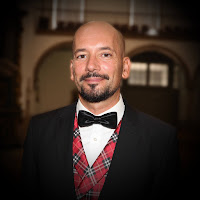https://www.dailymotion.com/video/x82gpgb (14‘) (password: paths)
Presenter: Bruno Mendes da Silva
Registration Number: 008
Institution: University of Algarve, Faro, Portugal
Abstract: Based on The Forking Paths project, this article aims to analyse the different models and levels of filmic interactivity. Through this analysis we seek indications for possible paths of evolution of the audiovisual language that, after the unavoidable contributions of authors like Griffith, Porter, Kuleshov, and Eisenstein, seems to have stagnated in time. Finally, we address the ultimate question: is there really interactivity between spectator and interactive film? The methodology used is based on "practice-based research": original research carried out in order to gain new knowledge through practice and the results of that practice (Candy, 2006; Candy & Edmonds, 2010). According to Candy, originality and contribution to knowledge can be demonstrated through creative outcomes, such as music, images or new media, that result in the cut of that research. The Centre for Research in Arts and Communication (CIAC) of the University of Algarve has been producing digital artifacts that promote the interconnection between arts and technologies, and a significant part of the products developed are the result of projects in the areas of interactive cinema (i.e. The Forking Paths [https://oscaminhosquesebifurcam.ciac.pt/en/]).
With the emergence of the film-application, the spectator has been gaining autonomy in the control and participation of the filmic narrative. However, despite the new interaction proposals being more and more technologically advanced, using sensors, virtual reality or other interfaces, the spectator is still confined to the pre-produced contents. In fact, we can only speak of true interaction when a reciprocal influence is effected in the communication process. Such interaction does not happen in any of the productions made up to the time of writing this proposal, limiting the viewers to certain insurmountable and predetermined choices. However, with the imminent possibility of the Fertile Model (a model whose process of interactivity between viewer and film enables the emergence of new contents that were not pre-defined a priori), the viewer gains creative powers that escape the control of the author, making concrete the idea of meta-author and providing a generation of unforeseen contents, the so-called contents of automatic creation. This will certainly be a break in the logical sequence of the brief history of interactive film, where film may become something it never was until now: a total interactive experience.

